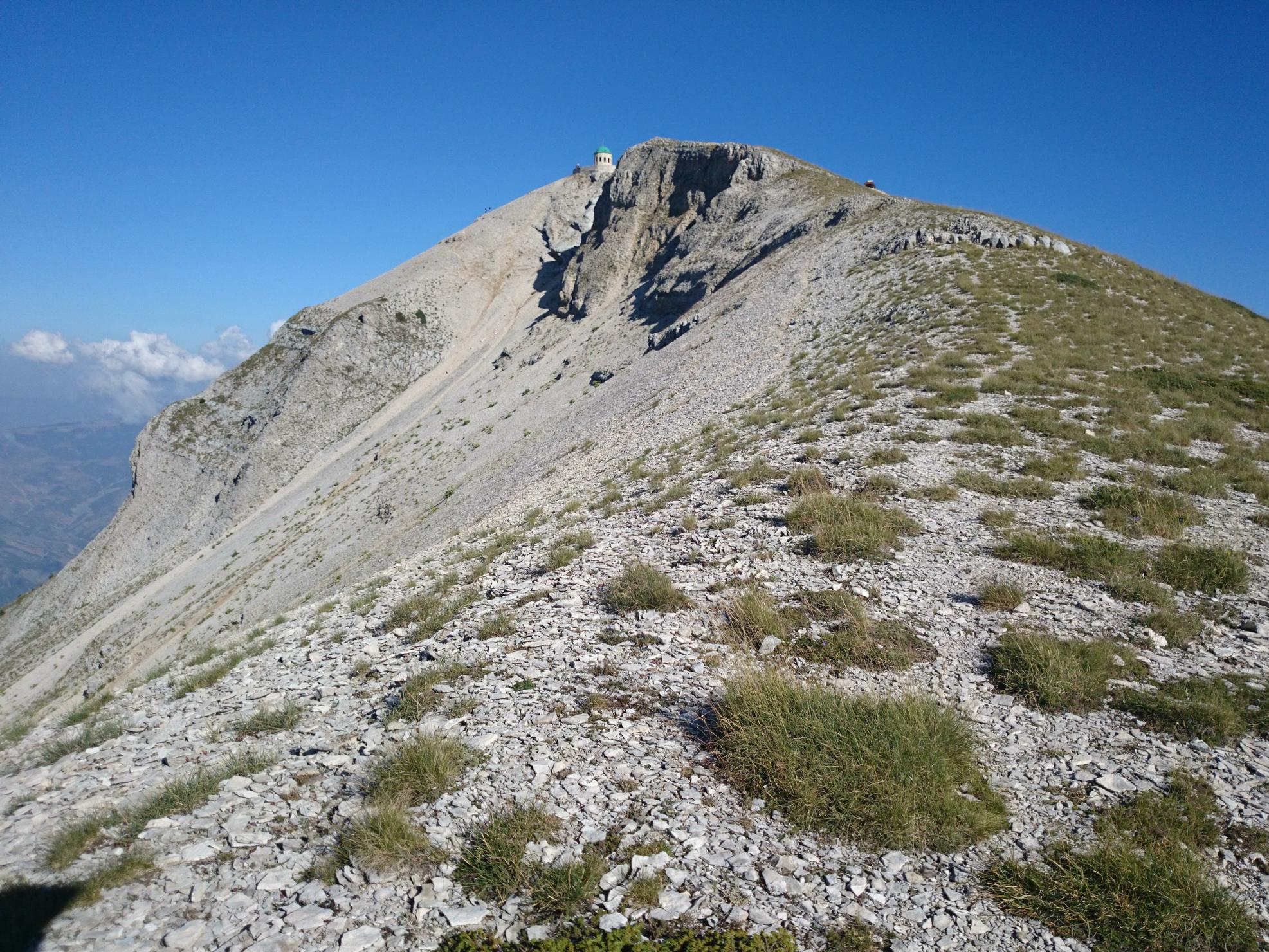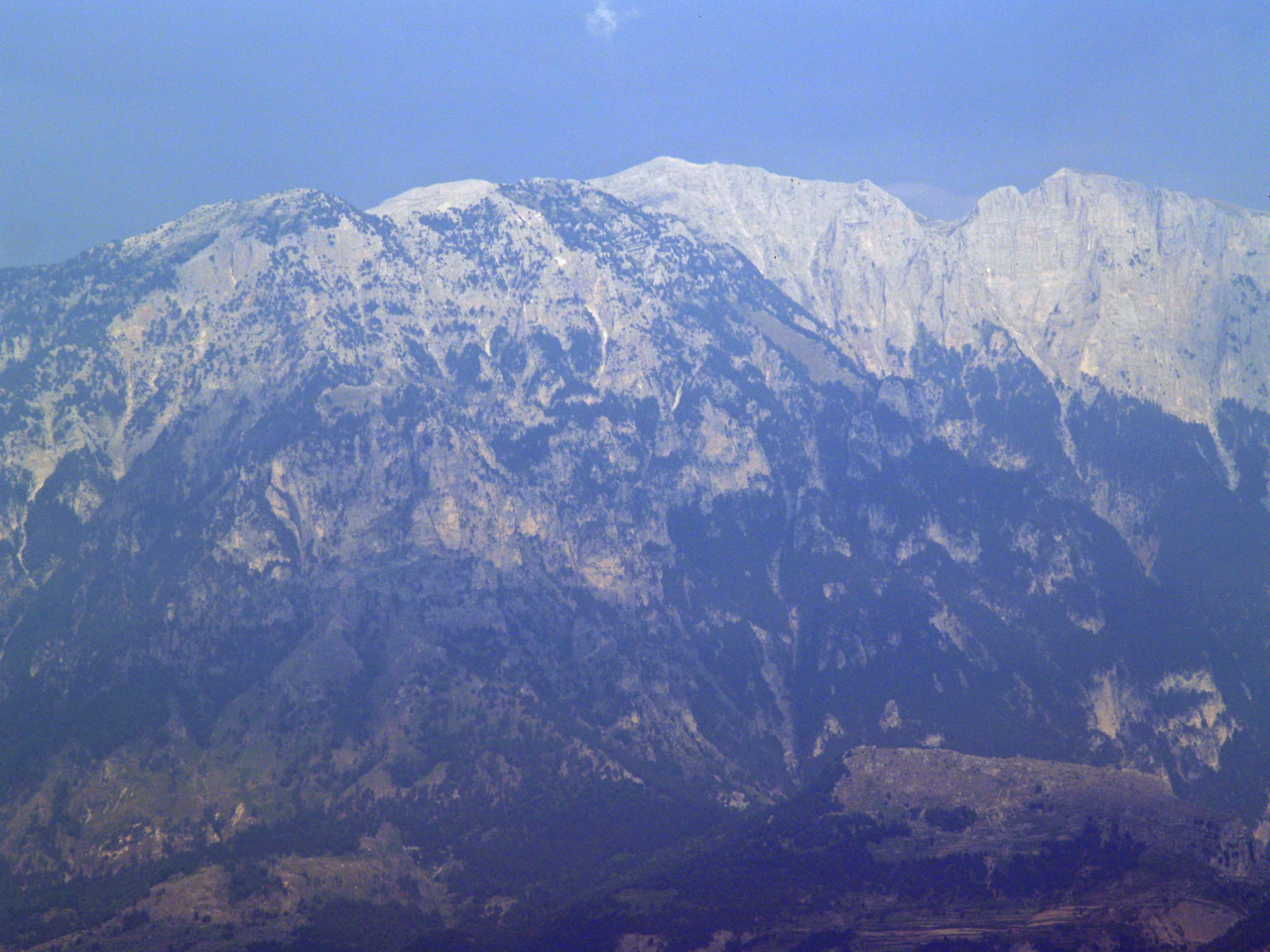Tomorricë on:
[Wikipedia]
[Google]
[Amazon]
Tomorrica () is a traditional or ethnographic region in Central Albania, located near the border between Berat County and Elbasan County. It takes its name from Mount Tomorr.
The modern region consists of 31 villages, and it is divided by the Tomorrica river. The town of

 Mount Tomorr has been the object of a significant reverence and a historical cult among Albanians, said to have
Mount Tomorr has been the object of a significant reverence and a historical cult among Albanians, said to have
Gramsh Gramsh may refer to:
*Gramsh District, former district in Elbasan County
* Gramsh (municipality), a municipality in central Albania
* Gramsh, Lezhë, a village in the municipality of Lezhë, Lezhë County
See also
*KF Gramshi, football club of Gram ...
is held to be part of the history of the region, but many may consider it to not be part of the region itself. The region is also known for its peculiar winds, known as ''stoçen'' locally, in which the clouds come close to the ground and "lie like a carpet".
The population is primarily Albanian and traditionally belonged to the Bektashi faith during Ottoman times,Çarçani, Leonard. ''Besimet Fetare në Prefekturën e Elbasanit''. Page 24 having been Orthodox Christian during the Middle Ages previously, although nowadays there are many irreligious people just as many other parts of Albania. It has also been affected more recently by heavy emigration, leaving entire villages deserted in the modern day. Despite its currently declining state as well as its small population and rough terrain, Tomorrica is said to have contributed greatly to Albanian history. Hence, it has been called "wretched with great people".
In the summer, there is a festival where locals ascend to the top of Mount Tomorr, where a Bektashi tekke is located. Although it is officially a Bektashi festival, non-Bektashis such as Christians and Sunnis also can and do take part.
History

Middle Ages
In the Middle Ages, Tomorrica was part of the domain of the Muzaka family, an Albanian noble family ofOrthodox Christian
Orthodoxy (from Greek: ) is adherence to correct or accepted creeds, especially in religion.
Orthodoxy within Christianity refers to acceptance of the doctrines defined by various creeds and ecumenical councils in Antiquity, but different Churche ...
faith originating from Opar which gave their name to the region of Myzeqe. According to the annals of Gjon Muzaka
Gjon Muzaka ( fl. 1510; it, Giovanni Musachi di Berat ) was an Albanian nobleman from the Muzaka family, that has historically ruled in the Myzeqe region, Albania. In 1510 he wrote a ''Breve memoria de li discendenti de nostra casa Musachi'' (Sho ...
, Tomorrica in the 15th century consisted of 80 villages. The Muzakas had in the region the "cellar" of their possessions, and also a gold mine. At this time, Tomorrica lied along the Via Egnatia on which Venice carried its goods to Moscopole, Grevena and Thessaloniki.
After the death of Skanderbeg, many families fled to either Greece or Italy and contributed to the emergence of Arvanite and Arbëreshë Arbën/Arbër, from which derived Arbënesh/Arbëresh originally meant all Albanians, until the 18th century. Today it is used for different groups of Albanian origin, including:
* Arbër (given name), an Albanian masculine given name
* Arbëresh ...
populations in those lands. Within Calabria
, population_note =
, population_blank1_title =
, population_blank1 =
, demographics_type1 =
, demographics1_footnotes =
, demographics1_title1 =
, demographics1_info1 =
, demographics1_title2 ...
, Arbëreshë with the names Gjerba, Jerba, Barç, Zhupa, and Zhepa are held by Eqrem Cabej
Ekrem is a Turkish language, Turkish form of the Arabic given name Akram, meaning "kind," "generous," or "benevolent." Sometimes rendered Eqrem in Albania. Notable people with these names include:
Ekrem
* Ekrem Akurgal (1911–2002), Turkish ar ...
to have origins in Tomorrice.
Ottoman rule
During Ottoman rule, Tomorrica was a subdistrict of Skrapar. At the time of early Ottoman rule, Tomorrica had about 500 able-bodied warriors, who frequently revolted against the Porte. In 1570, a major revolt was led by Hamza-Bey from Gramshi. The town ofGramsh Gramsh may refer to:
*Gramsh District, former district in Elbasan County
* Gramsh (municipality), a municipality in central Albania
* Gramsh, Lezhë, a village in the municipality of Lezhë, Lezhë County
See also
*KF Gramshi, football club of Gram ...
bloomed in the 16th century with 400 houses and 18 shops, and was the place of residence of important beys and spahis who ruled over lands faraway in Fier, Berat, Korca, and even in Macedonia and Greece. Gramsh thus became famous not just locally, but also in the high spheres of the Ottoman Empire during this time. It was during this time that the famous Architect Kasemi lived and was chief architect of the Ottoman Empire. Later however, fortunes declined, and the loss of properties in Greece due to the Greek War of Independence
The Greek War of Independence, also known as the Greek Revolution or the Greek Revolution of 1821, was a successful war of independence by Greek revolutionaries against the Ottoman Empire between 1821 and 1829. The Greeks were later assisted by ...
was a major blow. Around the same time, the famous Frasheri family moved from Tomorrica to Dangellia, while blood feuds were taking place.
Another wave of emigration out of Tomorrica occurred in the 18th century with hundreds of families leaving. Locals fled the area and settling in Perrenjas, Mazreke in Korca County, Krushevo in Macedonia, as well as among the Arberesh populations in South Italy and Greece.
In 1833 the inhabitants of Tomorrica took over the majority of the region causing the Ottoman government to comply to rebel terms.
At the end of the Ottoman Empire, two chetas affiliated with the Albanian nationalist guerrilla fighter Sali Butka
Salih Butka (1852 – 24 October 1938), was an Albanian nationalist figure, kachak, poet, and one of the delegates of the city of Korçë to the Albanian National Congress of Lushnjë.Nikolaeva Todorova Marii︠a︡''Balkan identities: nation ...
were active in Tomorrica.
Modern era
The Albanian Resistance hid out in Tomorrica during World War II.Mount Tomorr
 Mount Tomorr has been the object of a significant reverence and a historical cult among Albanians, said to have
Mount Tomorr has been the object of a significant reverence and a historical cult among Albanians, said to have pagan
Paganism (from classical Latin ''pāgānus'' "rural", "rustic", later "civilian") is a term first used in the fourth century by early Christians for people in the Roman Empire who practiced polytheism, or ethnic religions other than Judaism. ...
origins. This caused many to travel to the region historically as part of their pilgrimages to Tomorr. The cult of Tomorr was incorporated into the Bektashi faith as a syncretic element, and a Bektashi tekke stands at the top of the mountain. Tomorr was especially revered in the regions that it was visible from, which include Tomorrica itself as well as Skrapari
Skrapar ( sq-definite, Skrapari) is a municipality in Berat County, southern Albania. It was created in 2015 by the merger of the former municipalities Bogovë, Çepan, Çorovodë, Gjerbës, Leshnjë, Potom, Qendër Skrapar, Vendreshë
and Zhepë ...
, Dishnica
Dishnica is a traditional or "ethnographic" region of Albania, located in the Northern parts of former Përmet District and some nearby areas, with its exact borders occasionally being fuzzy. The bulk of its population is ethnically Albanian and ...
, Dangellia, Myzeqeja
The Myzeqe (; sq-definite, Myzeqeja; rup, Muzachia) is a plain in the Western Lowlands of Albania. The Myzeqe is the largest and widest plain, measured by area, in the Lowlands.
Location
The Myzeqe plain is a large alluvial plain traversed by t ...
, Sulova, Mallakastra as well as others. On August 20–25, there is a festival by which hundreds of thousands of people climb the mountain, with people of all faiths participating, and in some cases coming from places as far as Macedonia, Montenegro and Kosovo to join in.
In the 18th century, Abkhaz-Turkish Ottoman traveler Evliya Çelebi wrote that Europeans from various parts of the continent traveled to Tomorrica for its healing herbs. Notable Western Europeans who traveled to Tomorrica include Edward Lear
Edward Lear (12 May 1812 – 29 January 1888) was an English artist, illustrator, musician, author and poet, who is known mostly for his literary nonsense in poetry and prose and especially his limerick (poetry), limericks, a form he popularised. ...
and Antonio Balducci.
Notable People
*Architect Kasemi Architect Kasëmi () (1570–1659), born in Gremsh (Tomorricë), formerly Skrapar district, Albania, was an Albanian master of Ottoman classical architecture. He graduated in architecture in Istanbul and was ranked among the closest assistants of a ...
, famous architect during the Ottoman rule.{{cite news, url=http://www.balkanweb.com/site/kush-ste-do-moj-tomorrice, author= Bashkim Koci, date=3 March 2015, agency=Balkan Web, title=Kush s’të do, moj Tomorricë?!, accessdate=9 January 2018
* Ajaz Frasheri, grandfather of Naim Frasheri
Naim (also spelled Na'im, Nayeem, Naeem, Naiem, Nahim, Naheem, Nyhiem, Nihiem, Nyheim, Niheem, or Nahiem) ( ar, نعیم, he, נעים) is a male given name and surname.
Notable persons with the name include:
*Naim ibn Hammad (died 843 AD), H ...
* Ajli Alushani, health minister of Albania in the 1980s.
* Zylyftar Bregu, radio broadcaster.
*The father of Antonio Gramsci
Antonio Francesco Gramsci ( , , ; 22 January 1891 – 27 April 1937) was an Italian Marxist philosopher, journalist, linguist, writer, and politician. He wrote on philosophy, political theory, sociology, history, and linguistics. He was a ...
.
References